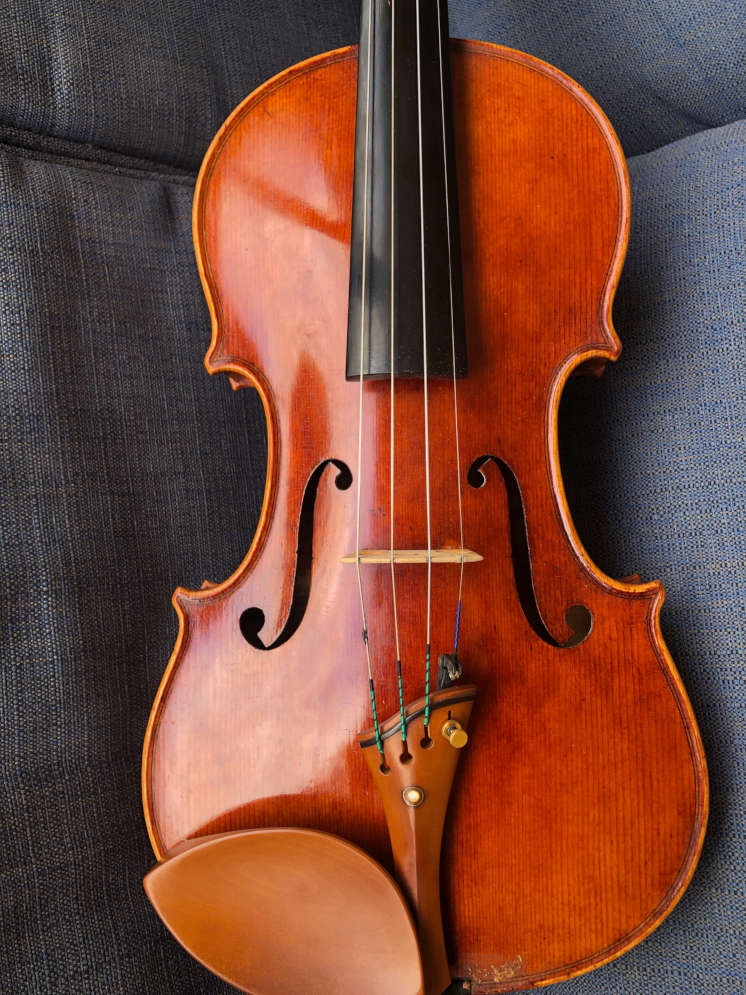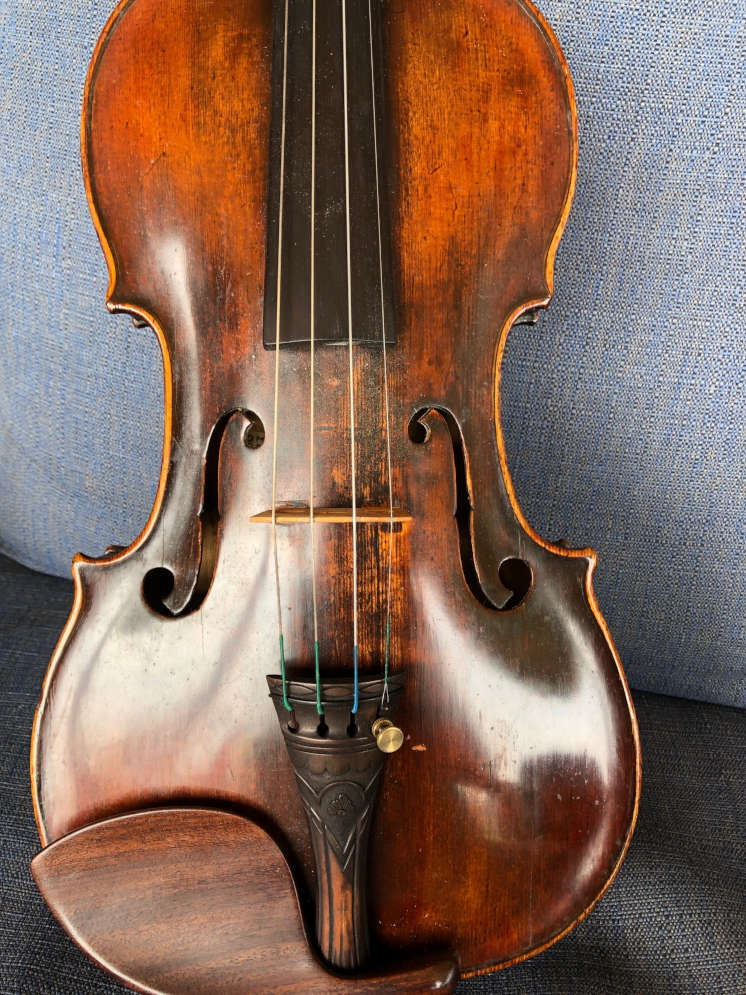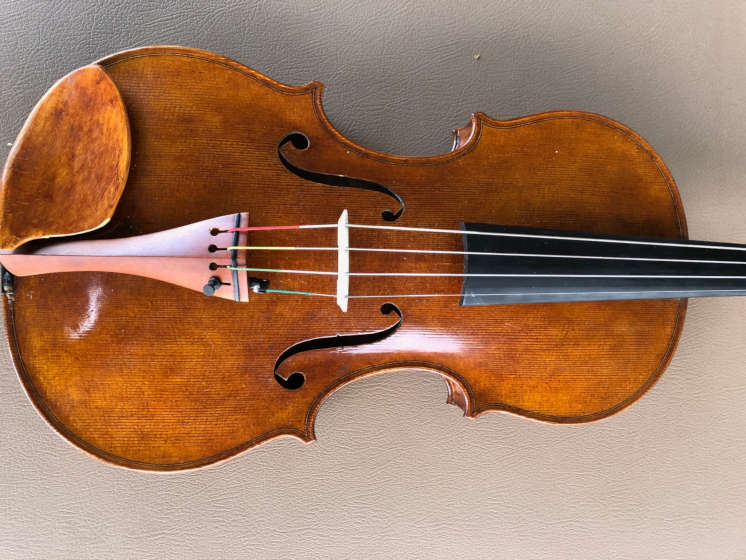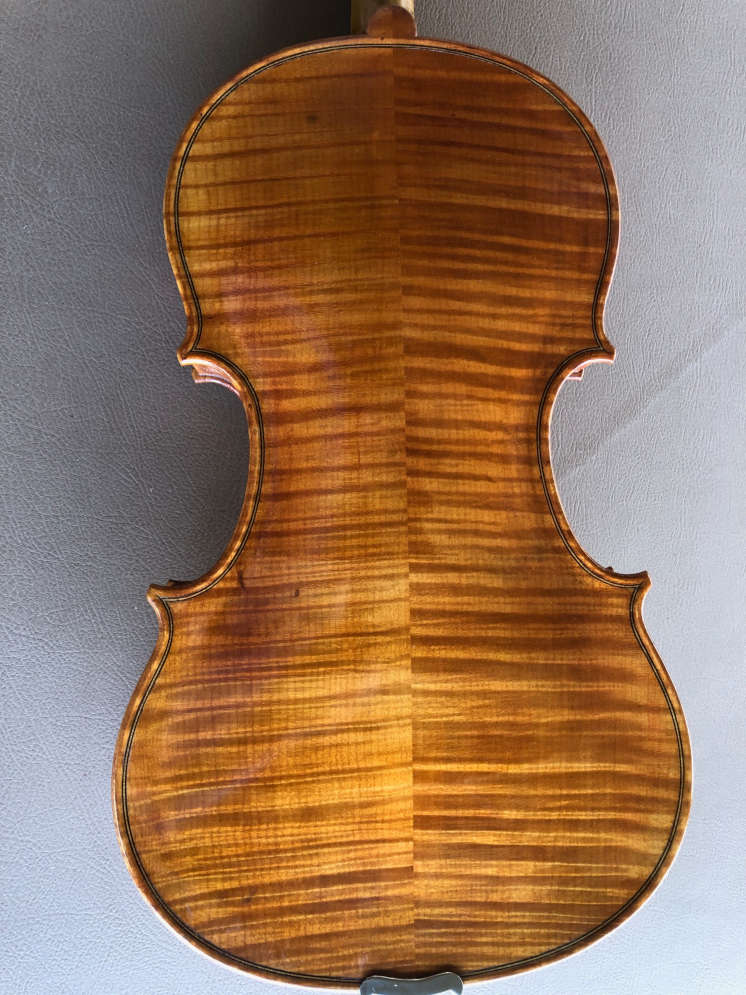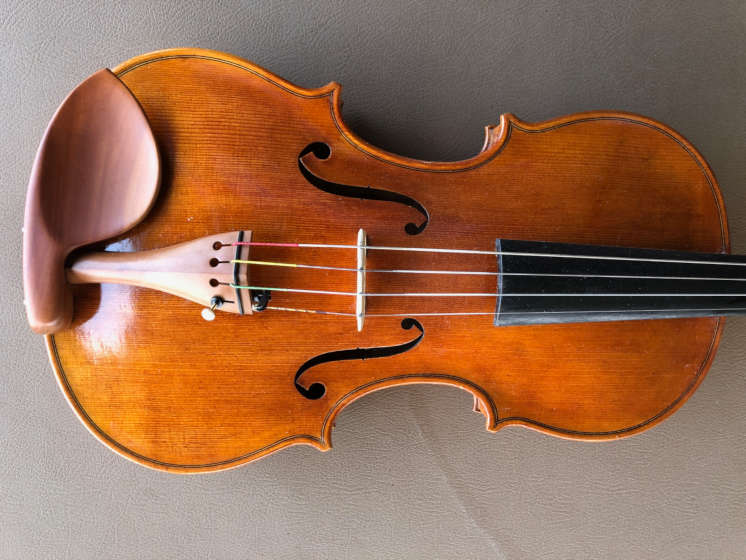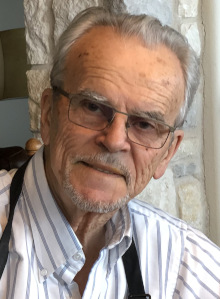
Welcome to Nagyvary Violins
Here is the culmination of decades of my violin research. My entry into violin making began in 1975 based on my belief that the vibrational properties of tone-wood could be improved through chemical modifications. I undertook a decades-long study of the effect of salt solutions on wood. The resulting scientific papers I published (in 1978, 2006, 2009, and 2021) revealed that Stradivari and Guarneri also employed a variety of salts in the preparation of their tone-wood. For the past two decades I have used chemical treatments like theirs in my instruments. This accounts for their powerful tone that has an appealing “sizzle”, or “sheen” which is clearly audible to listeners.
Joseph Nagyvary, 2023
We are now offering for sale a collection of violins, violas, and a cello bearing Nagyvary-Chen labels. They were made between 1990 and 2018 and monitored over time for their tonal development. These are fine concert instruments intended for use by soloists, professional players, and advanced students. The supply is limited. The opportunity to acquire one of my fine instruments at an affordable price is now. To learn more, see “A Brief History of Nagyvary Violins”.
Violins For Sale
Currently, we have a limited supply of violins with Nagyvary-Chen label made between 1990 and 2018, which have been kept for observation of changes caused by playing and aging. These are now being offered for sale, priced from $10,000 to $20,000. The broad range is due to differences regarding many quality factors, such as the beauty of the wood, workmanship - including special varnishing and coloring effects - and tone quality. Most importantly, a higher price means a greater amount of time spent with the laborious cycles of playing in, fine tuning, adjusting and quality control.
All the wood in the violins were mineralized with compositions like those of Guarneri and Stradivari instruments. This treatment which we developed during 45 years of studies and experimentation is an essential contributor to the powerful and brilliant sound. The exterior of the instruments was done by master G. Y. Chen, the thicknessing of the plates and the acoustical adjustments of the assembled violins, the finishing with a composite material (micro- and nanocomposite with quartz crystals) were done by Dr. Nagyvary.
The violins were played in for several weeks by electro-mechanical vibrators over the entire frequency range. They were also played by professionals and advanced students. Each note was analyzed many times by SpectraPlus signal analyzer which provides a fingerprint of the sound (FFT power spectra). Unless this fingerprint came close to those of the fine Stradivari and Guarneri violins, the new violin was reworked, or priced as a less expensive student violin. Knowing how to re-engineer a new and yet imperfect violin is one of the most important skills of a good maker. The musician may not understand the objective analysis, but he/she can clearly discern the clear, ringing and focused tone and the easy, crisp response of the finished violin. Similarities of sound spectra of the old and new violins would make it difficult for the audience to tell them apart, but the player would still hear the difference. Much of the perceived superiority of the old violins lies in their lower noise level, which we believe to be a material property. The attenuation of noise also seems to relate to the amount of playing time. Violins made with our process are played in faster and possess less noise than most new violins.
The violins were made following the models of Stradivari and Guarneri with body lengths of 35.0 and 35.6 cm. We also have two violas of sizes 15 1/2" to 15 3/4" (priced $12,000). Currently, we have one 7/8 size cello ($15,000).
Want to see more videos?
Visit Nagyvary Violins channel
Youtube.com/@NagyvaryViolins/videos
A Brief History of Nagyvary Violins

Introduction
I have not made my living from violin business; I was an academic. My degree from the University of Zurich (PhD 1964) was in natural products chemistry, and my special research interest as a professor at Texas A&M University was in the origin of life. For relaxation, I turned to a prime object of our cultural heritage, the Stradivarius violins, and what makes it so special. The love of the violin has been an important part of my Hungarian heritage (see ViolenceAndViolins.com).
When I was planning my first experiments in 1974, all violin research was focused on tuning of the free plates to certain frequencies, along with control of air-resonance in the assembled violin. To me, this seemed insufficient. The missing element in the toolbox of violin makers was the skill to manipulate the relative magnitudes of resonant peaks, i.e., fundamental versus higher partials (overtones).
After many discussions with physicists, I concluded that natural wood does not have the needed acoustical properties. Being an expert in natural products and wood chemistry, I had some ideas on how to make some beneficial changes. The most obvious culprit was excessive damping caused by the strongly moisture absorbing pectin and hemicellulose components of maple and spruce. They became the focus of my studies.
Zina Schiff plays Nagyvary violin in 1987
The early experiments of a hobbyist (1975-85)
From 1975 on, all the tone wood I acquired from Europe was soaked and boiled to partially hydrolyze the pectin and hemicellulose. It seemed very likely to me that introducing salts into all the cellular structures would influence the damping of vibrations. Of course, there are many salts to consider. There are salts that attract an excessive amount of water (LiCl, MgCl2); they would cause an increase of damping. There are salts which bind no water (KCl, KNO3). There are salts which bind several water molecules very tightly (most sulfates, borax). The last two categories offer the possibility to lower the damping and add the much needed “sizzle” or “sheen” to the violin sound. There are many salts under consideration and a very large number of combinations.
The first set of violins containing small amounts of added sea salt in all their wooden parts were crafted for me by professional makers of some reputation, starting with Stefano Conia in Cremona, and followed by the best students at Peter Prier’s school in Salt Lake City, Sam Zygmuntowicz, Benjamin Ruth, and Michael Scoggins. I applied the finish myself. These violins had exceptional sound qualities and found homes with professional players.

Lord Yehudi Menuhin with his Nagyvary violin, 1985
Then came a thrilling scientific breakthrough in 1978 after Paul Katz shared with me a piece of his Andrea Guarneri cello. Our analysis of the wood revealed the presence of significant amounts of Al, Ca, and K salts well above the natural content. It appeared that Guarneri’s wood had been salted either for preservation or acoustical purposes. So, I was on the right track anticipating what Guarneri did! This important finding was shared with makers at the 1978 November Convention of the Violin Society of America.
My violins made of salt- and heat-manipulated wood were evaluated for their tonal merits by highly regarded professionals and even top virtuosos, like Menuhin, Ricci, and Stern. Getting acquainted with them and receiving their approval was thrilling for a scientist. I must admit that in the first fifteen years we also made some bad violins, as we explored a range of salt recipes.
The news of my unusual approach to violin making spread mainly from the publicity around my 200+ public presentations to all the local sections of the American Chemical Society (ACS). Beginning in 1982 for about 30 years, my lecture titled “Renaissance Chemistry and Violin Making in Cremona” was the most requested one on the ACS lecture circuit. I also had interviews on all TV network news. My message was that the unique tonal merits of the Stradivarius violin were not merely due to artful crafting of his design; they cannot be reproduced by the most precise craftsmanship, if the wood is from current commercial sources. The woods of Stradivari and Guarneri had been chemically and thermally manipulated either by a local alchemist or by the makers themselves. This message resonated well among the members of my professional society, but also caused much pushback from the global violin business, dealers, and makers. And not a single violin researcher voiced agreement.
The funding of research during this period came out of my pocket. Most violins were given away.
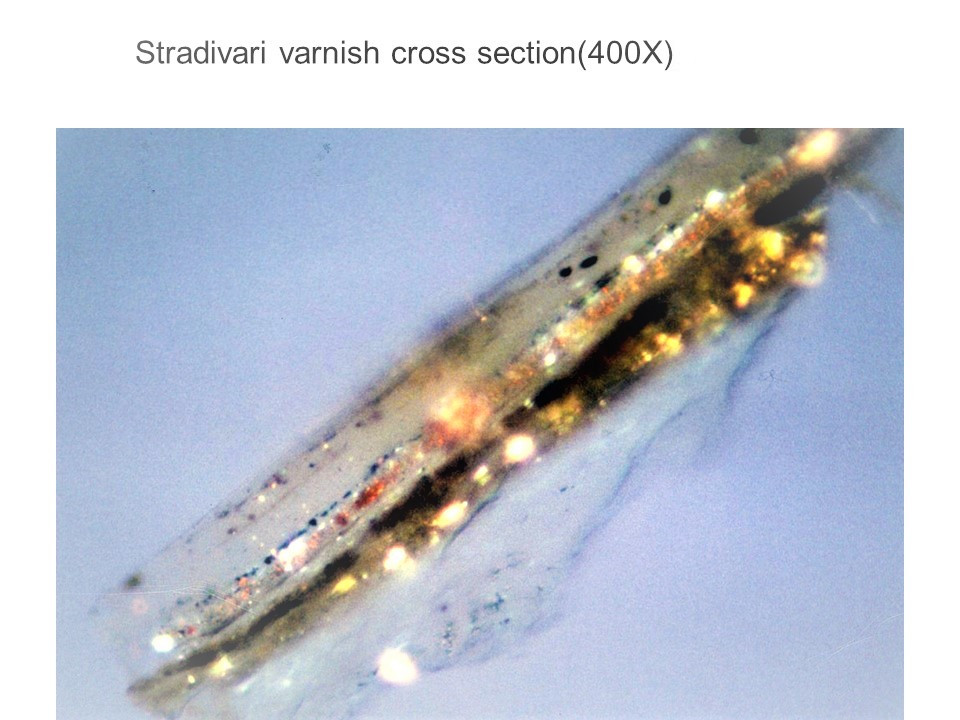
400x microscope image of Stradivari varnish showing a complex stratigraphy, 1987
Violin research at Texas A&M University, 1985-2003
After some health issues, including the paralysis of a vocal cord and surgery in 1984, my priorities changed, and my biochemistry research was terminated. The University granted me permission and the use of a field lab to expand my knowledge of violin making. A fortunate turn of events came in 1988 when I was awarded a Texas State grant for violin research. This grant enabled me to hire a professional maker, Guang-Yue Chen, with whom we had a productive association for 30 years.

Guang-Yue Chen and Nagyvary, 1989
It was in 1988 that my first scientific publications appeared in Chemical Engineering News (the membership magazine of the ACS) and in Naturwissenschaften (a European journal of science) describing the wood processing and a major new discovery that the highly admired old Italian varnish was a micro- and nanocomposite. Both the ground and the varnish proper were loaded with an assortment of mineral particles. (Available on request). This kind of finish can be a factor in contributing to the brilliance of sound.
Nagyvary Violins, as a business entity, was established in the early 1990s only for the purpose of generating funds for the support of ongoing research. 33 violins were donated to music schools.
Discovery at Yamaha Corporation
While steaming of the wood has been done by wood technologists for some time, in 2003 the engineers of the Yamaha Co. in Japan identified the steaming conditions followed by dry heat which resulted in a decrease of damping and a significant tonal improvement in violins. Unlike my wood and that of Stradivari and Guarneri, the Yamaha wood had no added mineral content. Both the Japanese scientists and I sought a comparison of their products with my own.

Nagyvary awarded gold medal at World Year of Physics, 2005 by Japanese Society of Physics
The Einstein centennial celebration, the end of “the year of physics” in Tokyo, Dec 13-15, 2005, organized by the Japanese Society of Physics offered the opportunity to have my violins compared directly with several Yamaha violins. The most popular local violinist Senju Mariko played the violins in both an anechoic chamber and the Opera City Concert Hall, which was the site of the closing symposium. There I was one of the two plenary speakers, and I was awarded a special gold medal for my research. In the following concert, Ms. Senju opted to play my violins, feeling that they manifested a rich and well-balanced tone.
Violin Research and Business in Retirement
After retiring from Texas A&M University in 2003, I continued my violin research as an active professor emeritus. As before, we sold a few violins mainly to support ongoing research. We published two important papers with evidence that both Stradivari and Guarneri del Gesù used chemically manipulated wood in their instruments. These papers, one in Nature (2006) and one in PLoSOne (2009) are available upon request. A larger sample of the old Cremona masters wood was analyzed by an international team organized by a friend from Taiwan, Professor H.C. Tai. I was one of the many coauthors of this article that appeared in the Angewandte Chemie in 2021. In addition to confirming my previous claims, the article presents much valuable new information.
Several makers/scholars associated with the Oberlin Workshop have recently come out of the closet revealing that they too have been tinkering with wood modifications, most of them based on the Yamaha steaming/dry heating method (www.youtube.com/watch?v=tqN0_Vnydzk). I have some reservations about the long-term stability of wood heated at high temperatures (140° and above). Wood with reduced hemicellulose and pectin content caused by heating is more susceptible to cracking. The heat I am using is not higher than 120°. A detailed discussion of the effect of the metal salts will be presented in the online journal ResearchGate. The presence of these salts offers better long-term stability.
What was for the last quarter of the 20th Century just my solitary position is on its way to becoming mainstream. Finally, makers are beginning to realize that one cannot fashion a violin with the tonal brilliance of a Strad and a del Gesù without certain chemical reactions in the wood prior to the carving process. In these complex chemical reactions may lie the long suspected Holy Grail of the Stradivarius and the sudden current emergence of many superior new violins, possessing a brilliant sound. They can compete successfully with the Strads.

Nagyvary making light fingerboards, 2019
Nagyvary Violins, once the lone pioneer, is still on the forefront of such materials research. I hope to continue working on new violins as I enter my 90’s in 2024. Like Stradivari in his 90s, I will need more assistance in making new violins. I can now also offer my special selection of older Nagyvary-Chen violins for sale, also a few new ones. This time for profit.
Biographies and Bibliography
Dr. Joseph Nagyvary
Dr. Joseph Nagyvary has brought an unprecedented level of academic expertise to bear upon the age-old violin puzzle. A native of Hungary, he majored in chemistry at the Eotvos Lorand University of Budapest (1952-1956); he became a student of the Swiss Nobel Laureate Paul Karrer in 1957 and received his PhD in the chemistry of natural products in 1964. While in Zurich, he had his first formal violin lessons on a violin which once belonged to Albert Einstein, a coincidence which helped to turn his attention to the physical mysteries of the violin. He gained his first glimpses into the art of violin making from the Zurich luthier Amos Segesser. In 1963, he spent a postdoctoral year in Cambridge with Lord Alexander Todd, a British Nobel Laureate. He came to the United States in 1964 and settled down in Texas in 1968 where he has remained a professor of biochemistry and biophysics at Texas A&M University until his retirement in 2003. Dr. Nagyvary was the recipient of a Career Development Grant, and numerous other research grants from the National Institutes of Health, the National Science Foundation, and NASA. His discoveries concerning the classical violins were made public in over 255 lectures sponsored mainly by the American Chemical Society and Physics Departments. On such occasions, his claims were examined by professionals and comparisons were made between Professor Nagyvary's new recreations and the finest locally available antique Italian violins, including several Strads.

Guang-Yue Chen and Nagyvary, 2018
Chen Guang-Yue, Violin Maker
Apprentice with his father, Chen Chao Xuan in Beijing. Married, 2 daughters. In 1987, Mr. Chen was awarded the Gold Medal in workmanship for viola in the All-China Musical Instrument Competition. In April 1989, Mr. Chen came to Texas A&M University on the invitation of Professor Joseph Nagyvary to serve as the resident violin maker on a state project. During his 3 years of employment, Mr. Chen distinguished himself by copying many famous models and crafting several modifications. Since April 1992, Mr. Chen has had his own business named "Richsound Violins", while maintaining part-time collaboration with Dr. Nagyvary. In 1999, a violin of Mr. Chen was awarded a certificate of merit for tone at the competition of the Violin Society of America. Collaboration with Dr. Nagyvary lasted until his death in 2018.
Prominent Displays
The 25th anniversary of Professor Nagyvary’s Stradivarius research at Texas A&M University was celebrated by a special event on Feb.12, 2001 in the George Bush Presidential Library and Conference Center. Featured speaker was Dr. A. E. Pavlath, the president of the American Chemical Society. Zina Schiff presented a recital playing first her Stradivarius, then her Nagyvarius violin. This led to the making of The Stradivarius Puzzle CD. Another high-profile public comparison was organized by the national science association Sigma Xi in 2002, in which Shunsuke Sato played both a great Strad (the Booth) and a new Nagyvary-Chen violin. A concert and a blind test were presented to an audience of 600 at the George Bush Presidential Library in 2003 under the sponsorship of the German MiraMedia as a part of their documentary "Stradivari: A Search for Perfection". On Dec. 15, 2005, Dr. Nagyvary was the featured speaker at the Einstein Centennial Celebration of the World Year of Physics, in Tokyo. The event included an evaluation of a Nagyvary violin by a panel of physicists and a concert on the same violin by Mariko Senju. On this occasion, Dr. Nagyvary was awarded a gold medal of the Japanese Physics Society for his discoveries of microcomposites and nanocomposites in the old Italian finishes.
Noteworthy Quotes
Dr. A. E. Pavlath, President, American Chemical Society:
" The ACS is pleased to have been the sounding board of Dr. Nagyvary’s accounts of his research on the violin for the past 25 years. He has been the pioneer of the chemical paradigm in violin making. Many of us have been persuaded by him that the Holy Grail of violin making is to be found in the chemistry of the materials. Indeed, this may be one of the truly inspirational applications of chemistry".
Isaac Stern, violin virtuoso:
"Dr. Nagyvary’s knowledge of the tone quality of great violins as well as their method of construction makes his work of special value to us all today. I would think that any artist or technician could but learn from his years of study. There are few people today who could write authoritatively on the subject. He is one of those few. With him go my warmest personal greetings and every good wish for continued success in his work."
Violin Related Publications of Dr. Joseph Nagyvary
- The history and interpretation of chemical knowledge available to violin makers. J. Violin Soc. of America, Vol. IV, Nos. 3&4, pp. 147-176, 1978.
- The effects of minerals and fiber on plate tuning. Ibid. Vol. VI, No. 2, 54-79, 1981.
- Strategies for acoustical varnish. Ibid. Vol.VI, No. 3, 19-25, 1983.
- The Cremona gold color: Its chemistry and reconstitution. Ibid.,VII., No.2, 88110, 1984.
- The chemistry of Stradivarius. Chem&Eng News, May 23, 1988.
- The composite nature of the antique Italian varnish. Die Naturwissenschaften, 75, 918-920, 1988, by J. Nagyvary and J. Ehrman.
- In Hungarian, Magyar Kemikusok Lapja: A Stradivari hegeduk kemiaja, avagy az alkimistak dicserete, Vol.XLV. no.6, 242-7, 1989. (The chemistry of Strad violins, and the praise of alchemists)
- Entzifferung des Stradivari-Tones und allgemeine Geigenforschung in Texas. Das Musikinstrument, 42, No.6-7, pp.107-111, 1993.
- Modern Science and the Classical Violin-- a View from Academia. The Chemical Intelligencer, 2, No. 1, 24-31, 1996.
- Investigating the secrets of the Stradivarius. Education in Chemistry, July 2005, pp.96-98.
- Wood used by Stradivari and Guarneri. Nature, 444, 30 Nov. 2006, p.565,by J.Nagyvary, J.A. DiVerdi, N.L. Owen&H.D. Tolley.
- Mineral Preservatives in the Wood of Stradivari and Guarneri. (2009) by J.Nagyvary, R.N. Guillemette, C.H. Spiegelman
http://www.plosone.org/article/info%3Adoi%2F10.1371%2Fjournal.pone.0004245 - Development of the Chemical-Material Paradigm of Cremona Violins, Part I--The Wood of the Masters. VSA Papers, XXII, No.1, 91-115, 2009
- The chemical-material paradigm of Cremonese violins-Part II, Studies of varnishes, VSA Papers, XXIV, No.2, 97-124, 2014.
- Comparative study of power spectra and vowels in Guarneri violins and operatic singing. March 8, 2013.
https://www.savartjournal.org/articles/18/article.pdf - Materials engineering of violin soundboards by Stradivari and Guarneri, CK Su et al. Angewandte Chem. Vol.60, no.35, 19144, 2021
https://doi.org/10.1002/anie.202105252
Partial listing of other media releases
- Smithsonian Magazine: What Makes a Stradivarius Special? When It Comes to String Instruments, Stradivariuses Are Still Pitch Perfect
https://www.smithsonianmag.com/smithsonian-institution/string-instruments-stradivariuses-still-pitch-perfect-180981015/ - Nature: Wood used by Stradivari and Guarneri
https://www.nature.com/articles/444565a - Scientific American: Secrets of the Stradivarius: An Interview with Joseph Nagyvary
https://www.scientificamerican.com/article/secrets-of-the-stradivari/ - Discover Magazine: Stradivari's Secret
https://www.discovermagazine.com/the-sciences/stradivaris-secret - ABC News: Scientists Learns Secrets of Strad Violin
https://abcnews.go.com/Technology/story?id=98197&page=1 - Research Gate: Joseph Nagyvary
https://www.researchgate.net/profile/Joseph-Nagyvary-2 - Wikipedia: Joseph Nagyvary
https://en.wikipedia.org/wiki/Joseph_Nagyvary - "What is music?" PBS Nova special program featuring violin research at TAMU. Also, ABC World News, NBC Nightly News.
- Major articles in New York Times, Times of London, Die Welt and diverse magazines such as The Smithsonian, Science '84, Readers Digest, Discovery, People, and Southern Living. Inclusion of Nagyvary's work in the 6th grade Science textbook published by Silver Burdett & Ginn, and in the high school textbook "Modern Chemistry" by Holt, Rinehart and Winston.
- Recordings avialable on CD using Nagyvary violins were made by Zina Schiff on Stradivari Classics label (Bach&Vivaldi, SCD 8010; The Lark Ascending, SCD 8011), and by Suzan Leon under Classiopee Disques (Dvorak, DDD 969252; Faure DDD 969251).
Contact
For inquiries, please email
nagyvary@nagyvaryviolins.com
To buy a violin, please text me at (979) 676-3323, or send email to make an appointment for a personal visit in Jonestown, Texas to choose from a limited supply of instruments. We mail violins only occasionally, since such requests are too numerous, and we prefer to keep 90% of the violins at home in our showroom. When we agree to mail a violin, we do so by UPS 2nd-day-air for a 2-week try-out, and the expenses for round-trip shipping must be guaranteed by the client if the instrument is not purchased. We do not buy back any used instruments.
For inquiries in Europe, please contact
Lili Simon in Budapest
lilisim2004@gmail.com





